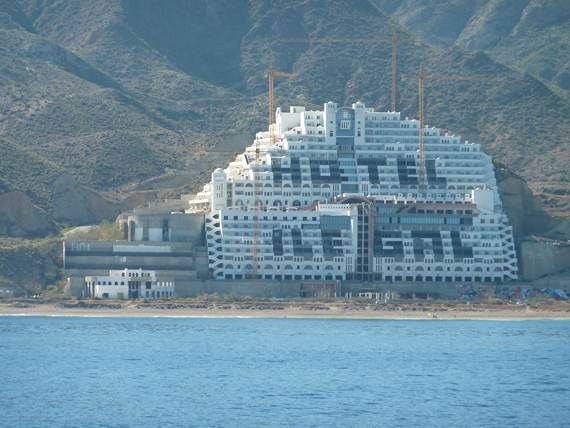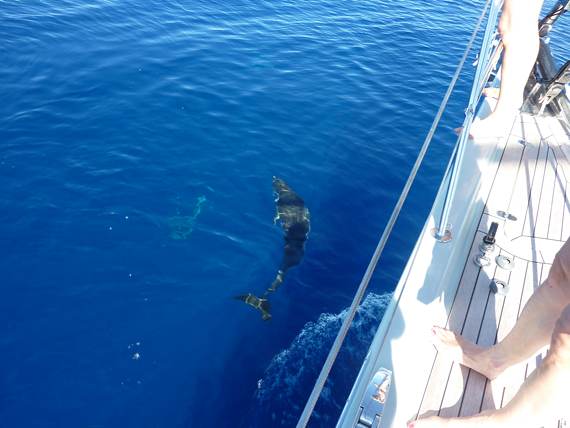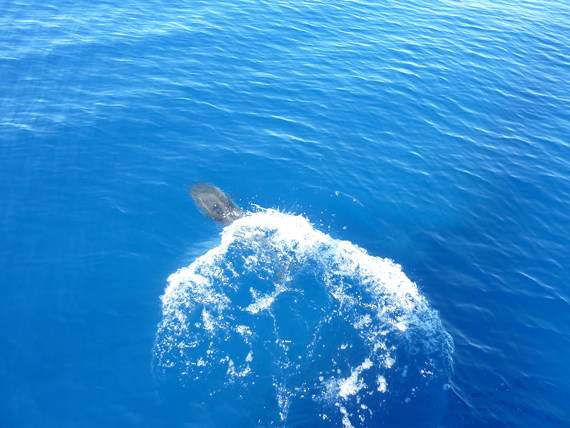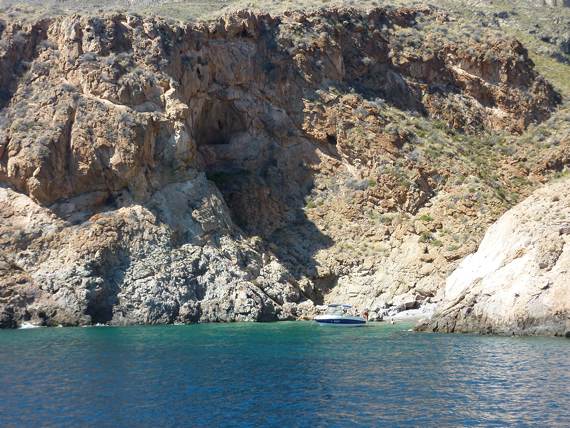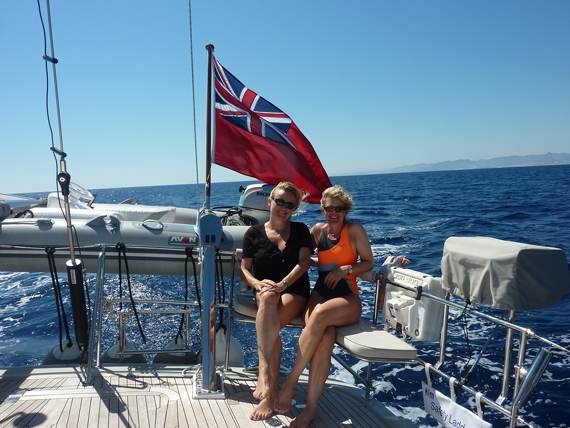Cartagena

Juno
Paul and Caroline Frew
Tue 13 Sep 2011 08:45
Hurrah, the wind is back. We are sailing from mainland Spain, just north of
Alicante, towards Formentera, the most Westerley of the Balearic Islands.
We left Cartagena yesterday, having said good bye to Saz as she sped off in
a taxi to Murcia airport towards her next holiday destination. Saz managed
to get everything into her brief visit, from calm sailing conditions, hot
sunny days, pods of dolphins and a visit to the beautiful city of Cartagena.
Cartagena has a long and chequered history having been established around
100BC and since then it seems to have been invaded by every marauding nation
that passed this stretch of coastline. Its violent past is reflected in the
architecture which ranges from Byzantine ruins to huge palatial stone
mansions which sit atop the vast fortified walls that surround the city.
Caroline valiantly tried to drag us off to see the Roman ruins but after a
long day in the sun our interest was Tapas and cold beer. Once sated, we
were more docile and followed Fatty as she strode determinedly down dark
alleyways, eventually leading us up stone steps to a terrace overlooking a
Roman amphitheatre, a sight which always makes one marvel at the
sophistication of such a bygone era.
Now its just the two of us again and around 75 miles to Formentera, so we
set off early at 7.30 this morning. After several days of calm, the Italian
weather forecast had predicted a light South westerly today, increasing
offshore to a force 4, and then backing to the East tonight and increasing
in strength over the next few days. Tempting though it was to go back to
sleep this morning, another day on the mainland and we would have been
beating the whole way into a strong Easterly; not the end of the world but a
slower and less comfortable passage. As it is, the Italians were bang on the
Lire, or is it the Euro, or maybe soon to be the Lire again? When we left
Villajoyosa it didn't look very promising, with a light westerly wind and no
sign of much else. However, this offshore wind in the early morning is not
uncommon in the med and is known as a land breeze. It is caused by the land
cooling down overnight and as the relatively warm air over the sea rises, it
creates a vacuum, sucking the cooler air from the land out to sea to
equalise the pressure. As the day goes on, this turns into a sea breeze, and
when the land gets hot by mid afternoon and the process reverses, it can
create as much as twenty knots of wind - clever stuff eh? Anyway, back to
this morning, the engine stayed on and we motored East directly towards our
destination and took turns to have a morning dooze. A dooze, by the way, is
an amalgam of Snooze, something you might do lying down, maybe even in bed,
and Doze, when you find yourself nodding off in front of the TV after Sunday
lunch. I awoke from my Dooze at around 10 by which time we were about twenty
miles offshore and i could immediately feel the change in conditions. The
Vento Italiano had arrived bang on cue, with 13 knots from the southwest,
which given our easterly course, gave us a broad reach towards our
destination, under full genoa and mainsail.
Breakfast of scrambled egg and fresh bread, washed down with a cappuccino
while sailing downwind in sparkling sunshine towards the Balearics, one of
the best cruising destinations in the Mediterranean - not too shoddy really.
However we were slightly distracted by our AIS which was telling us that we
would pass very close to a large ship heading at high speed in our
direction. AIS stands for (i think) Automatic Identification System and i
wouldn't want to go to sea without it. AIS uses VHF to transmit a vessel's
position to all other vessels which are similarly equipped with this magic
piece of kit - and most are, other than Spanish fishing boats which are a
rule unto themselves. AIS vessels show up on the chart plotter as little
grey triangles, and when they get too close, the triangle flashes red and an
alarm goes off. By highlighting the vessel on the chart plotter you can see
exactly who the offending boat is, including its name, destination, size,
speed, and most importantly the closest it will get to you if you maintain
your current course and speed. According to AIS the passenger ferry called
Excelsior was 800 feet long, making 25 knots on its way to Barcelona and we
were due to pass within 30 feet of it in 55 minutes, far too close for
comfort, and the AIS was flashing and squawking in alarm. A small change of
course and the danger was easily averted but it shows just how valuable the
technology can be.
Eventually, at around 6pm the low lying profile of the island of Formentera
emerged on the horizon and as we rounded the point of Pedreras and into the
Ensenada del Cabrito, the bay opened up to reveal flat calm water with a
number of yacht all at anchor in the early evening sunshine. We found a spot
of sand, dropped our anchor and launched the tender to forage for Mojitos in
the port.
Now, back to Roman generals and thank you for the various suggestions as to
who it was, when having written a long report of his latest campaign,
apologised and said that he hadn't had time to write a short one. I have it
on good authority from Mark McCaffery, a classics teacher from Homefield
Prep School in Sutton, that it was in fact Cicero in a letter he wrote to
either Cato or Cassius around 50BC with reference to his return from
Cilicia. Thanks to Mark and to Nick at Galore Park Publishing who emailed
his customers to track down the elusive scribe.
